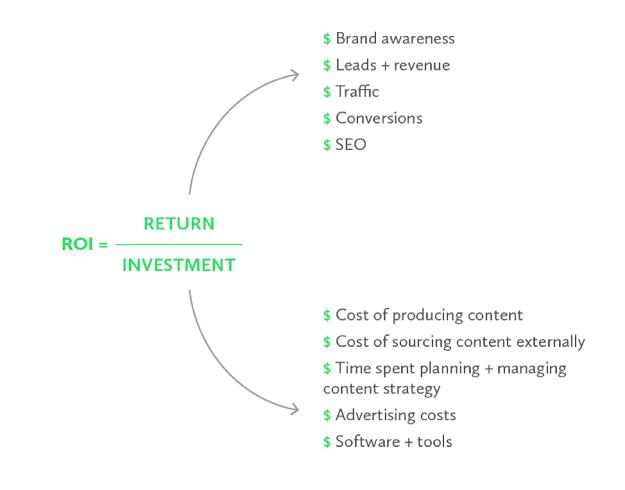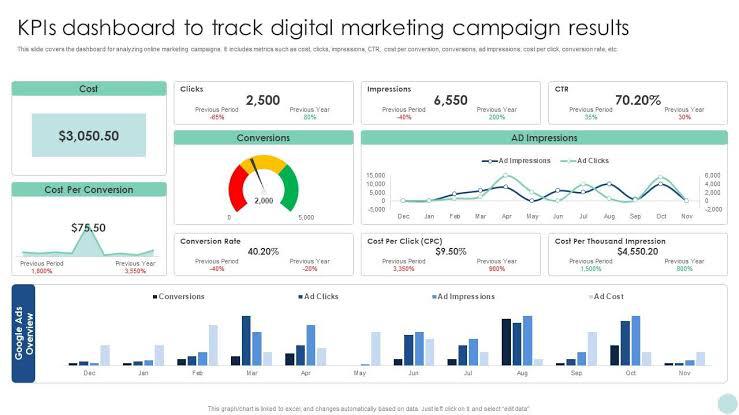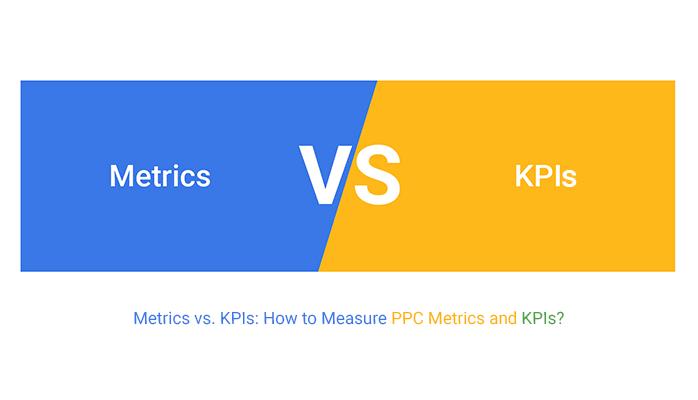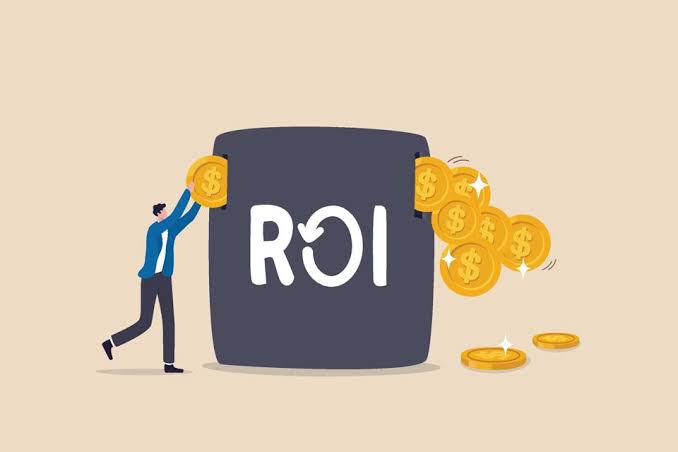Introduction
In digital marketing, success isn’t just about launching campaigns—it’s about ensuring every dollar spent delivers measurable results. Return on Investment (ROI) is the ultimate benchmark of performance, separating effective strategies from wasted efforts. But how do you truly maximize ROI? The answer lies in tracking the right metrics.
From customer acquisition cost (CAC) to lifetime value (LTV), conversion rates, and engagement metrics, understanding these numbers allows you to optimize campaigns, allocate budgets wisely, and drive sustainable growth. In this guide, we’ll break down the key performance indicators (KPIs) that matter most and show you how to leverage them for maximum profitability. Whether you’re running paid ads, content marketing, or social media campaigns, these insights will help you make data-driven decisions that improve efficiency and scale your success

This article delves into the key metrics that businesses should monitor to unlock maximum ROI in their digital marketing endeavors. By examining metrics like conversion rates, cost per acquisition, return on ad spend, and customer lifetime value, we will explore how these indicators collectively contribute to driving success. Additionally, we will examine how these metrics vary across different digital channels, providing actionable insights for refining strategies and improving outcomes. Through a data-driven approach, this article empowers businesses to make informed decisions, align their efforts with business goals, and ultimately achieve sustained growth and profitability.
Defining ROI in Digital Marketing
Return on Investment (ROI) is the cornerstone of any successful digital marketing strategy. It measures the profitability of your marketing efforts by comparing the revenue generated to the cost of running campaigns. But ROI in digital marketing goes beyond just dollars and cents; it also includes metrics like brand awareness, customer retention, and engagement, which contribute to long-term growth. Understanding how to define and calculate ROI accurately ensures that your marketing strategies are not only effective but also financially sustainable.
To calculate ROI, consider the following formula:

For instance, if a company invests $40,000 in a Google Ads campaign and generates $50,000 in sales, the ROI would be: 25% using the formula
Beyond immediate sales, it’s crucial to account for the long-term benefits, such as brand loyalty and repeat purchases. Calculating Customer Lifetime Value (CLV) helps assess the cumulative ROI over time.
Different digital channels contribute uniquely to ROI. Paid media, such as Google Ads and social media ads, offers direct reach through paid clicks or impressions, often with a clear cost associated. In contrast, organic traffic from SEO or social media requires less direct investment but can build brand authority and drive referral traffic.
Effective ROI measurement begins with clear, SMART goals—Specific, Measurable, Achievable, Relevant, and Time-bound. These goals provide a roadmap for assessing progress and success. Utilizing analytics tools allows marketers to track metrics comprehensively, identify trends, and adjust strategies accordingly.
Defining ROI in digital marketing is essential for making informed decisions and optimizing performance. By focusing on both financial and non-financial returns, businesses can gain a clearer picture of what’s working and what needs improvement. The key is to align ROI measurement with business goals, ensuring that every marketing effort contributes to overall success. When you track ROI effectively, you can maximize efficiency, reduce waste, and continuously improve your digital marketing strategy
Core Metrics Driving ROI
In digital marketing, understanding the core metrics that drive Return on Investment (ROI) is essential for optimizing strategies and maximizing efficiency. These metrics provide insights into how effectively your efforts translate into tangible outcomes, helping you make data-driven decisions to achieve higher ROI. Below, we delve into four key metrics that play pivotal roles in driving ROI: Conversion Rate, Cost Per Acquisition (CPA), Return on Ad Spend (ROAS), and Customer Lifetime Value (CLV).

Conversion Rate
The Conversion Rate is a critical metric that measures the percentage of visitors who complete a desired action, such as purchasing a product, signing up for a service, or filling out a contact form. A higher conversion rate indicates a more effective campaign, as it demonstrates that your digital marketing efforts are successfully guiding visitors towards taking action.
For instance, if your website attracts 10,000 monthly visitors and 2,000 of them convert into paying customers, your conversion rate is 20%. This metric directly impacts your revenue, as each conversion contributes to the bottom line. By monitoring and improving your conversion rate, you can enhance your ROI by increasing the number of paying customers.
Cost Per Acquisition (CPA)
Cost Per Acquisition (CPA) refers to the average cost incurred to acquire a new customer. This metric is particularly valuable in paid media channels, such as Google Ads or social media ads, where you pay for clicks or impressions. A lower CPA indicates greater efficiency, as you are spending less to attract each new customer.
Comparing CPA across different channels can reveal which platforms offer the best return on investment. For example, if acquiring a customer via Google Ads costs $50, while social media acquisition costs $120, Google Ads may be the more efficient channel. This analysis helps in reallocating resources effectively to maximize ROI.
Return on Ad Spend (ROAS)
Return on Ad Spend (ROAS) measures the profit generated for every dollar spent on advertising. It is calculated as the revenue generated minus the cost of the ad spend. A high ROAS indicates that your advertising efforts are yielding profitable leads or sales, thereby contributing positively to your overall ROI.
For example, if you spend $10,000 on a Google Ads campaign and generate $30,000 in revenue, your ROAS is 200%. This metric is crucial for evaluating the profitability of your campaigns and identifying areas where ad spend may be optimized.
Customer Lifetime Value (CLV)
While more complex to calculate, Customer Lifetime Value (CLV) is essential for understanding the long-term impact of your marketing efforts. CLV represents the total revenue a customer will generate over their lifetime with your brand. By considering CLV, you can assess the cumulative ROI of acquiring a customer, even if the initial investment is high.
For instance, if each customer spends $200 annually and has a CLV of $150, the net benefit is $50 per customer. This perspective helps in evaluating the sustainability of your marketing strategies and ensuring that long-term gains are accounted for in ROI calculations.
Impact of Core Metrics on ROI
These core metrics collectively contribute to maximizing ROI by providing insights into various aspects of your digital marketing strategy. Conversion Rate and ROAS directly measure immediate financial returns, while CPA and CLV offer insights into the efficiency and sustainability of your efforts. Together, they form a comprehensive framework for evaluating and optimizing your marketing performance.
By regularly analyzing these metrics, you can identify trends, refine your strategies, and make informed decisions that drive higher ROI. Continuous monitoring and adjustments, supported by advanced NLP techniques, ensure that your digital marketing efforts remain aligned with your business objectives.
Key Performance Indicators Across Channels
Different digital marketing channels serve unique purposes, but they all contribute to a common goal: maximizing ROI. Whether you’re running paid ads, email campaigns, social media marketing, or SEO, tracking the right Key Performance Indicators (KPIs) is crucial for optimizing performance. Each channel has specific metrics that determine its effectiveness, from Click-Through Rate (CTR) and Cost Per Click (CPC) in paid advertising to engagement rates on social media and organic traffic in SEO. Understanding these KPIs allows marketers to make data-driven decisions, refine strategies, and ensure every marketing dollar is well spent

Paid Media
Return on Ad Spend (ROAS): Measures the profitability of advertising campaigns, indicating whether the revenue generated exceeds the ad expenditure.
Click-Through Rate (CTR): This reflects how engaging the content is, as a higher CTR implies more interested users interacting with the ads.
Cost Per Click (CPC): Assesses the efficiency of paid media efforts, with lower CPC indicating better value for money.
Organic Traffic
Sessions: Indicates how many times users visit the website organically, without direct paid promotions.
Time on Page: Provides insight into content quality, as longer durations suggest engaging material.
Bounce Rate: Reveals user satisfaction; a low bounce rate means users explore more pages before leaving.
Social Media
Engagement Rate: Tracks how actively users interact with content, including likes, comments, and shares.
Follower Growth: Monitors the expansion of the brand’s audience on social platforms.
Viral Reach: Measures how widely content spreads organically, reflecting its appeal and shareability.
Email Marketing
Open Rate: Indicates the effectiveness of email campaigns in capturing attention.
Click-through rate (CTR): Shows how compelling the email content is in driving actions.
Conversion Rate: Tracks the percentage of email recipients who take desired actions, such as purchases or sign-ups.
Website Performance
Page Load Speed: Crucial for user experience, as faster loading sites often lead to higher conversions.
Bounce Rate: Related to user satisfaction, a low bounce rate suggests content is meeting visitor needs.
Session Duration: Indicates how much time users spend on the site, reflecting content relevance and engagement.
Each of these KPIs plays a vital role in enhancing ROI by providing actionable insights. For instance, a high ROAS in Paid Media highlights the profitability of ad investments, while a low bounce rate on the website suggests improved user experience. Collectively, these metrics guide data-driven decisions, ensuring that each channel aligns with broader business goals and contributes effectively to overall success.
Analyzing Metrics for Actionable Insights
Tracking digital marketing metrics is only the first step. True success comes from analyzing the data and turning it into actionable insights. Simply collecting numbers won’t improve ROI unless you know how to interpret them and make strategic adjustments. Whether it’s identifying trends in customer behavior, optimizing underperforming campaigns, or reallocating budgets to high-performing channels, data-driven decision-making is key. By analyzing metrics effectively, marketers can move beyond vanity metrics and focus on strategies that drive real growth and profitability

Identifying trends is the first step toward informed decision-making. Trends reveal shifts in consumer behavior, competitor movements, and market dynamics. For instance, noticing a surge in mobile traffic may prompt a responsive design overhaul. Similarly, observing increased competition in a niche area might necessitate a reevaluation of targeting strategies.
Opportunities for optimization emerge when examining underperforming channels. High bounce rates on a website could indicate content issues or loading speed problems. Conducting A/B tests on elements like CTAs or landing pages can pinpoint specific areas for improvement, ensuring that each adjustment maximizes impact.
Continuous monitoring is essential as markets evolve rapidly. What works today may become obsolete tomorrow. Regularly reviewing metrics and adjusting strategies ensures adaptability, keeping campaigns aligned with current demands.
Data without action is just noise. To maximize ROI, marketers must go beyond tracking metrics and use them to refine their strategies. By identifying patterns, testing new approaches, and continuously optimizing campaigns, businesses can make smarter decisions that improve efficiency and profitability. The goal isn’t just to gather insights it is to turn those insights into measurable results that fuel long-term success in digital marketing
Setting Clear Goals and KPIs
Defining clear goals and KPIs is the foundation of an effective digital marketing strategy. When objectives are specific and measurable, businesses can accurately assess performance and make informed adjustments. The key is consistency. Regularly reviewing KPIs ensures marketing efforts remain aligned with business goals and market trends. By setting clear targets and tracking the right metrics, marketers can create scalable strategies that drive long-term growth and profitability

Understanding Your Business Objectives
Start by clearly articulating what you aim to achieve. Whether it’s increasing brand awareness, driving sales, generating leads, or improving customer retention, your goals must be specific, measurable, achievable, relevant, and time-bound (SMART). For instance, if your objective is to boost online sales, you might set a target of increasing your conversion rate by 20% within six months.
Defining KPIs for Measurement
Once your goals are established, identify the KPIs that will best gauge your progress. KPIs vary depending on your industry and business model. For example:
– E-commerce: Conversion Rate, Average Order Value, Customer Lifetime Value (CLV).
– B2B Companies: Lead Generation, Sales Cycle Length, Customer Acquisition Cost (CAC).
– Content Marketers: Session Duration, Time on Page, Social Media Engagement.
These metrics provide a quantitative way to assess your performance and adjust strategies accordingly.
Aligning KPIs with Teams and Channels
Ensure that your goals and KPIs are communicated across all teams, from marketing and sales to customer service. Shared understanding fosters collaboration and helps in creating cohesive strategies. For example, your marketing team might focus on increasing social media followers, while your sales team tracks lead conversion rates.
Regular Review and Adjustment
Markets evolve rapidly, so your goals and KPIs must be reviewed periodically. What works today may lose effectiveness tomorrow. Schedule regular check-ins to evaluate your progress, identify bottlenecks, and refine your approach. This iterative process ensures continuous improvement and keeps your strategies aligned with current market demands.
By setting clear goals and selecting the right KPIs, you create a roadmap for success. This clarity allows you to allocate resources effectively, optimize your strategies, and ultimately achieve higher ROI in your digital marketing efforts.
Optimizing Strategies Based on Metrics
Metrics are more than just numbers; they’re a roadmap to better performance. Once you’ve tracked and analyzed your digital marketing KPIs, the next step is optimization. This is where real growth happens. By identifying what’s working and what’s not, marketers can tweak campaigns, reallocate budgets, adjust targeting, refine messaging, and improve user experience. Optimization isn’t a one-time fix, it’s a continuous process of testing, learning, and adapting. When you use metrics to guide your strategy, every change you make is backed by data, not guesswork

One of the most critical metrics is the conversion rate. If this rate is lagging, it signals the need for a closer examination of landing pages and calls-to-action. Perhaps the design of the landing page is not resonating with visitors, or the CTA may not be compelling enough. Adjustments here can significantly boost conversions, thereby enhancing overall ROI.
Similarly, analyzing the cost per acquisition (CPA) reveals the effectiveness of ad spend. If CPA is elevated, it may indicate that ads are being shown to less targeted audiences. Refining ad targeting or bidding strategies can reduce costs and improve relevance, directly contributing to better ROI.
Return on Ad Spend (ROAS) is another pivotal metric. It highlights which advertising channels are generating profitable returns. Channels with lower ROAS may warrant reduced allocation of budget, allowing resources to be funneled into more productive avenues.
Customer Lifetime Value (CLV) offers a broader perspective by assessing the long-term revenue potential of acquired customers. Understanding CLV helps in evaluating the sustainability of customer acquisition strategies, ensuring that efforts align with sustained growth.
The iterative process of testing and adjustment is crucial. A/B testing allows for empirical validation of changes, whether it’s in email subject lines, ad creatives, or website layouts. Each test provides actionable insights, enabling swift adjustments that amplify campaign effectiveness.
Cross-channel analysis is equally vital. Sometimes, underperformance in one channel can affect overall strategy. By examining data from paid media, organic traffic, social media, and email marketing, businesses can identify synergies or gaps that need addressing.
Optimization is where data transforms into results. By using metrics to guide strategic decisions, marketers can increase efficiency, boost engagement, and maximize ROI. Whether it’s improving ad performance, enhancing content, or fine-tuning email campaigns, data-driven adjustments ensure your marketing efforts evolve with your audience and the market. The brands that win are the ones that don’t just measure—they adapt. Make optimization a habit, not an afterthought, and you’ll stay ahead in the ever-changing digital landscape
Continuous Monitoring and Adjustment
In the dynamic world of digital marketing, the importance of continuous monitoring cannot be overstated. As new platforms emerge, algorithms evolve, and consumer behavior shifts, staying ahead requires constant vigilance. Regularly tracking metrics provides valuable insights that guide strategic adjustments, ensuring that digital marketing efforts remain aligned with business goals and yield optimal returns.
Modern marketers rely on sophisticated tools like Google Analytics, SEMrush, and HubSpot to gather comprehensive data on campaign performance. These tools reveal bottlenecks, such as underperforming ad campaigns, allowing for targeted adjustments. For instance, if an ad campaign fails to generate clicks, the data might indicate that the targeting is too narrow or the message isn’t resonating. Such insights enable precise tweaks, enhancing efficiency and effectiveness.
A/B testing plays a crucial role in this process. By experimenting with elements like headlines, call-to-action buttons, and landing page designs, marketers can determine what truly engages their audience. Without testing, strategies might stagnate, potentially missing opportunities for improvement that could boost conversions and ROI.
Cross-channel analysis is another cornerstone of continuous monitoring. Gaining visibility into how different channels perform together ensures that no potential is left untapped. For example, if social media engagement is low despite targeted efforts, data from other channels might reveal complementary strategies that can be integrated for better results.
The process begins with identifying areas needing adjustment, followed by implementation. After making changes, it’s essential to measure the impact. This iterative cycle of monitoring, adjusting, and re-evaluating ensures that strategies evolve in response to changing conditions, maintaining peak performance.
While this process demands time and resources, the long-term benefits are significant. Continuous monitoring fosters adaptive strategies that adapt to market changes, leading to sustained growth and higher ROI. In essence, it’s not a one-time task but a commitment to excellence, driving digital marketing efforts toward their full potential.
Best Practices for Tracking ROI
Tracking Return on Investment (ROI) in digital marketing is crucial for assessing the effectiveness of your strategies and ensuring that your efforts align with business goals. To maximize ROI, follow these best practices:

Adopt an Integrated Approach: Use tools that consolidate data from all marketing channels, including paid media, organic traffic, social media, email, and website performance. This holistic view helps identify which strategies are generating the most value.
Prioritize High-Impact Metrics: While metrics like conversion rate and click-through rate (CTR) are important, focus on a mix of quantitative and qualitative measures. Consider the cost per acquisition (CPA) and return on ad spend (ROAS) to gauge profitability alongside engagement metrics like social media reach and email open rates.
Schedule Regular Reviews: Conduct periodic assessments—monthly or quarterly—to evaluate campaign performance. This ensures that strategies adapt to evolving market conditions and customer behaviors.
Foster Collaboration Across Teams: Involve cross-functional teams in ROI reviews. Marketers, designers, developers, and analysts bring diverse perspectives, ensuring comprehensive insights and alignment on goals.
Document Strategies and Outcomes: Keep detailed records of past campaigns, noting successes, challenges, and lessons learned. This documentation supports future planning and avoids redundant efforts.
Leverage Advanced Tools: Invest in analytics software like Google Analytics, SEMrush, or HubSpot to track performance metrics and gain actionable insights.
Be Patient and Evaluate Long-Term Impact: Understand that ROI may take time to manifest. Avoid quick fixes; instead, focus on sustainable growth through well-executed, long-term strategies.
By implementing these practices, you can accurately track ROI, refine strategies, and achieve greater success in your digital marketing efforts.
Conclusion
In today’s competitive digital landscape, maximizing ROI is not a luxury; it’s a necessity. Success doesn’t come from guesswork or gut feelings; it comes from setting clear goals, tracking the right metrics, and using data to make informed decisions. Whether you’re optimizing campaigns, analyzing performance across channels, or making real-time adjustments, every action should be rooted in measurable outcomes.
By focusing on the key metrics that truly drive growth and profitability, marketers can fine-tune their strategies, reduce wasted spend, and deliver greater value to their business. The path to high ROI is continuous, but with the right mindset and tools in place, it’s absolutely achievable. Stay data-driven, stay agile, and keep refining because in digital marketing, the learning (and earning) never stops